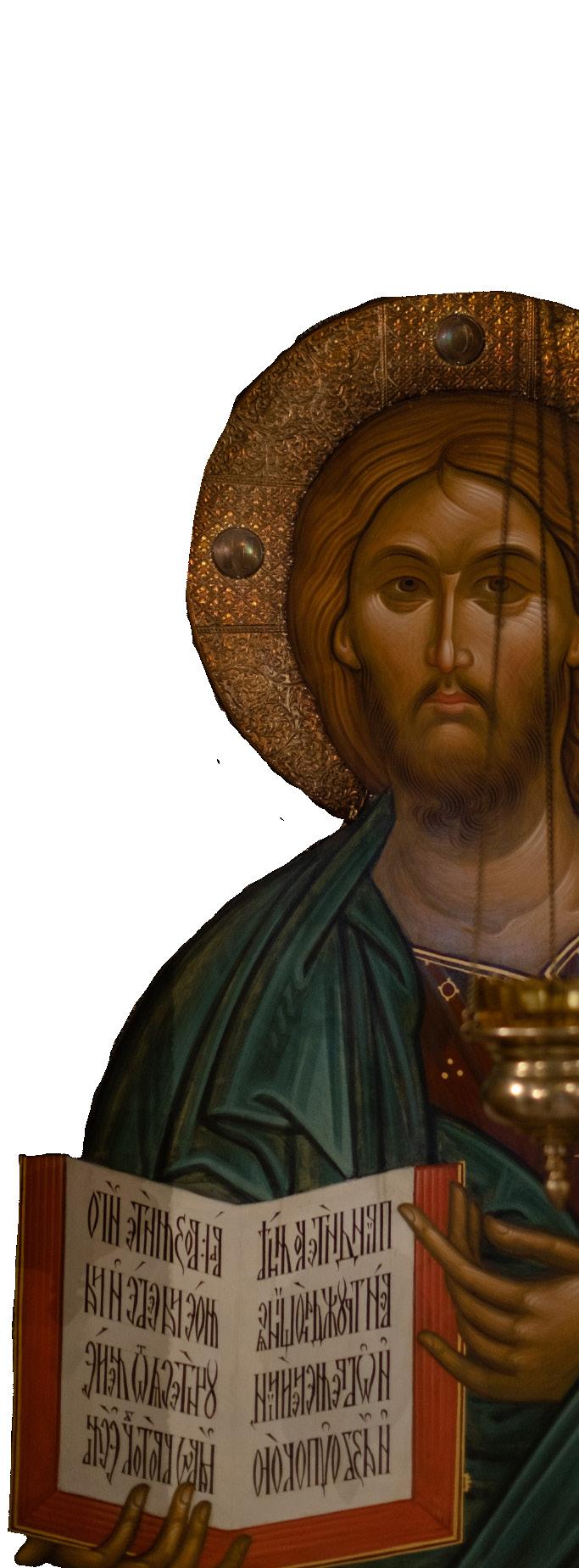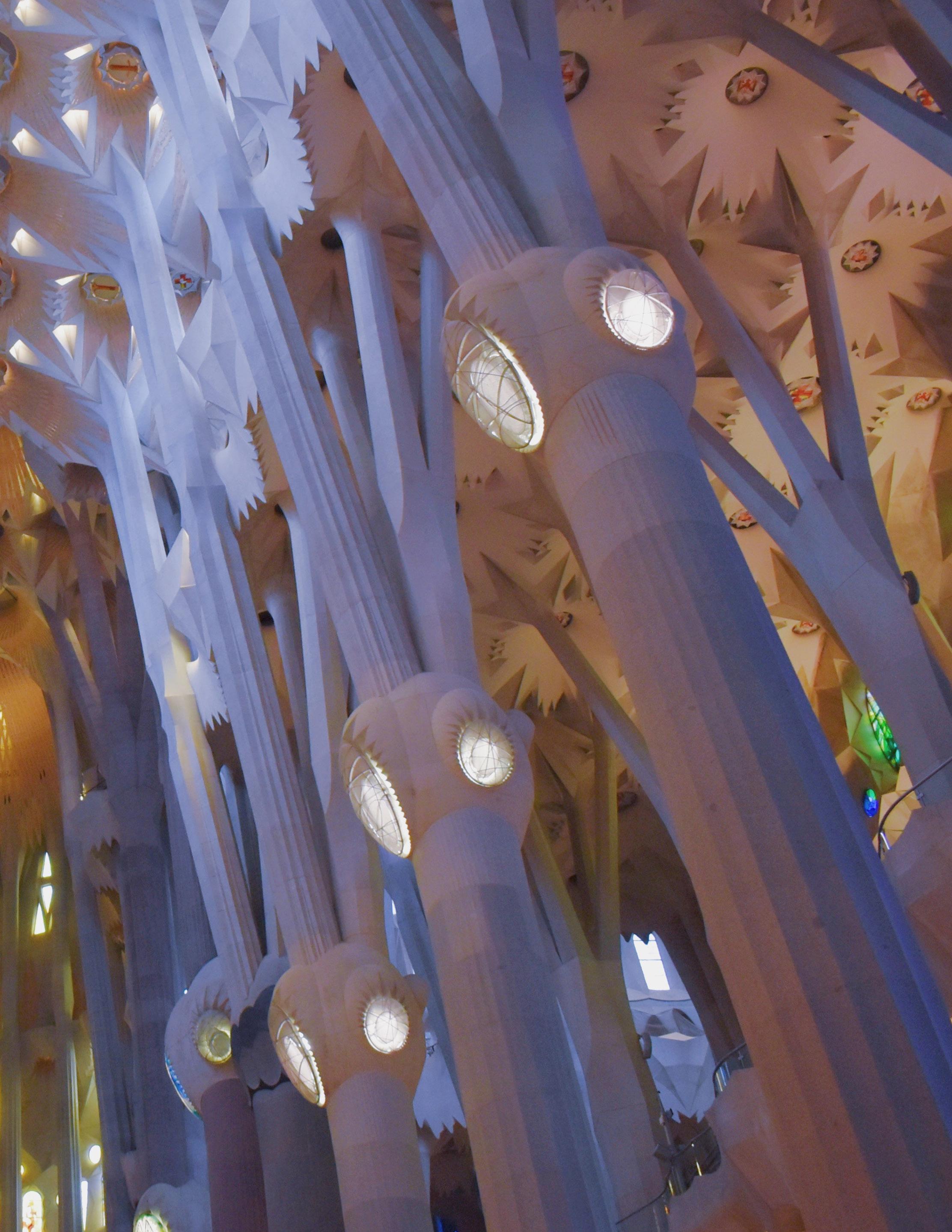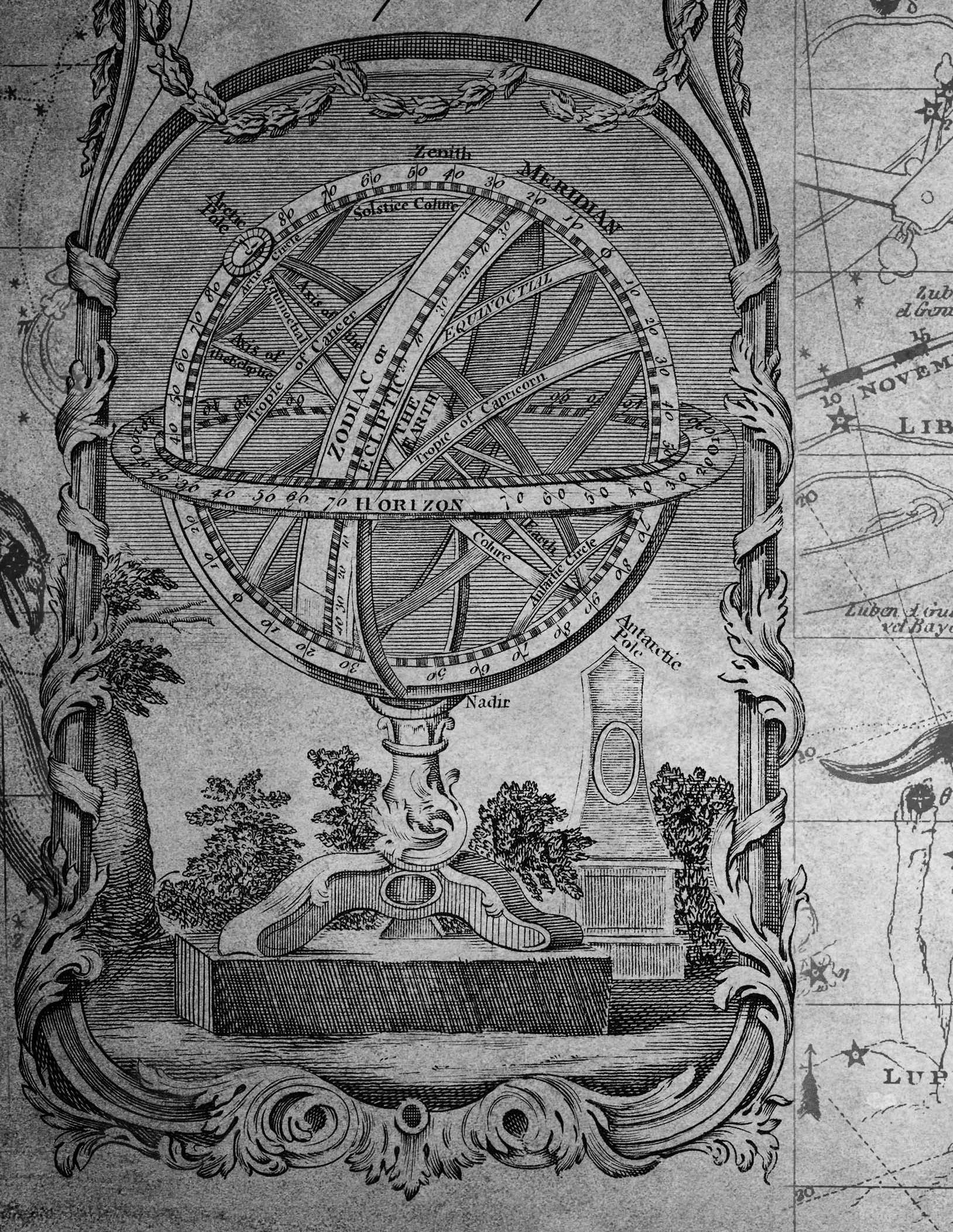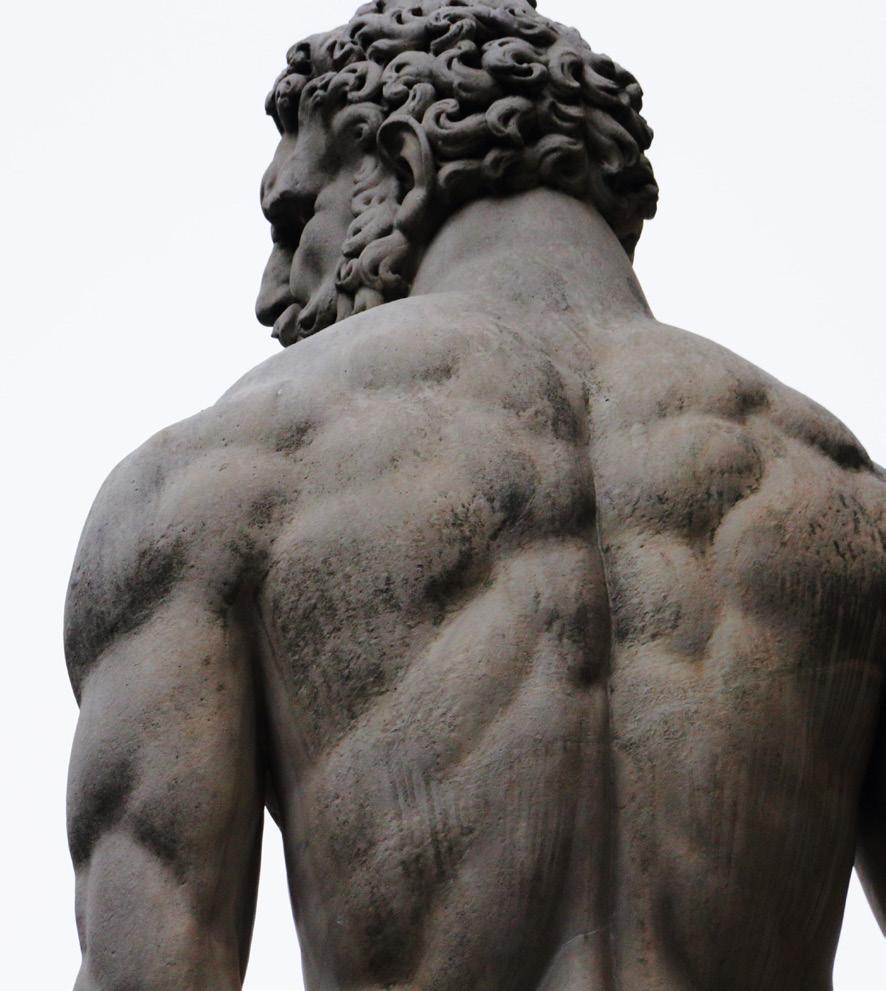
MAGAZINE Photography Competition Winner: Maesa Vicente, pages 18, 22 Twin Feature: The Spiritual Life Traditionalism v.s The Charasmatic Renewal, page 8 The Metaverse, page 20 03 Vol 1 No 3 the right worship issue
Secularism: The Rebirth of Pagan Religion, page 24
metanoia
CONTRIBUTORS
EDITOR-IN-CHIEF & CREATIVE DIRECTOR
Isabel Cumbelich
CONTENT DIRECTOR
Zoë Grimm
ASSISTANT EDIT OR
Mark Taylor
DESIGNERS AND ART
Christina Burke
Gwyneth Sawicki
Isabel Cumbelich
Margaret Kolesar
Maghee Fleischer
EDITORS
Amelia Coleman
Zoë Grimm
MARKETING/SOCIAL MEDIA
Elaine Gunthorpe
Erin McLaughlin
Isabel Cumbelich
FUNDRAISING
Isabel Cumbelich
Maggie Black
ADVISORY BOARD
Kathleen Sullivan, PhD
Niall O’Donnell
Joseph Brutto, PhD
Daniel McInerny, PhD
Hugh O’Donnell, PhD (candidate)
Ben Reinhard, PhD

LETTER FROM THE EDITOR
Dear Reader,
This month I interviewed for a job at a tech company based in Boston. I had barely begun to talk about my work on Metanoia, when my interviewer stopped me and said, “Yes, I read it cover to cover.” A fallen away Catholic, he and I discussed the Faith for the next 45 minutes.
I was so surprised he had taken the time to read it, but it only shows the hunger for publications that spread the truth and talk about things of substance. Through Metanoia, Christendom students planted the seeds of curiosity for the Faith in at least one man’s heart. Who knows who else we have touched!
MISSION STATEMENT:
Metanoia is a student magazine that showcases the height of Christendom excellence in the areas of journalism, art, and design. It is meant to inspire thoughtful conversation among the student body and the broader Christendom community. Metanoia articles address issues concerning society, our immediate surroundings, and ourselves. Metanoia allows promising students the opportunity to develop their talents so that they can use contemporary media to “Restore All Things in Christ.”
In Christ, Editor-in-Chief
Isabel
Cumbelich
— 2 —
Julie Wells Photography
FEATUREDCONTENT
maesa vicente: photography competition winner
SELF got sleep? return of the readers
TWIN FEATURE: THE SPIRITUAL LIFE catholic traditionalism vs. the catholic charismatic renewal
Metanoia Magazine
SURROUNDINGS
SOCIETY a holy war
secularism:
4 6 9 12 24 20 IN SIDE THISISSUE 14
— 3 —
understanding the metaverse
the rebirth of pagan religion
18, 22
GOT SLEEP?
by ELAINE GUNTHORPE '24

Mostpeople today get less sleep than they should due to extended work hours, constant influx of information, and on-demand entertainment. As students who take our work home with us every night, it seems we are caught in an everlasting sleep deprivation cycle. A lack of consistent and sufficient sleep is detrimental to our short-term and long-term health and detracts from quality of performance and relationships.
Self
— 4 —
People with chronic sleep deprivation are more likely to be overweight, fatigued, irritable, stressed, and have difficulty concentrating. Poor sleep throughout one’s life and early onset diseases such as cardiovascular disease, types of cancers, type 2 diabetes, and neurological disorders go together. According to research from Harvard Medical School, sleep deprivation has also been linked to anxiety and depression.
According to The National Institute of Neurological Disorders and Strokes, “without sleep (getting enough of it at the right times) you can’t form or maintain the pathways in your brain that let you learn and create new memories.” So, maybe instead of staying up until three a.m. to cram for you exam, you should just go to sleep instead. In 2019, two MIT professors found a correlation between sleep and test scores showing that less sleep yielded worse test scores. By building good habits to get the proper amount of sleep you are setting yourself up to excel in college and beyond and to improve your longevity and happiness.
3. Avoid using any electronics before bed
4. Limit caffeine intake close to bedtime. Caffeine disrupts the quality of your sleep and leads to feeling even more tired in the morning
5. Be active. Go to the gym or on a long walk outside so you fall asleep more easily
6. Don’t work in your bed– reserve this space for sleeping only
How to Sleep Better Tonight:
1. Establish a consistent bedtime and wake up schedule. Keeping to your bedtime will help with staying on task throughout the day
2. Find an exciting bedtime routine you look forward to like read one chapter of your favorite book before bed

While it is easy to push sleep off to the weekend, or to promise yourself that you will create a consistent sleep schedule after college, good sleep doesn’t come without good habits, which is why we need to start building them now.

Metanoia Magazine
— 5 —

Return of THE READERS
by KAYLEE O’NEILL '25
This past fall, I challenged myself to waste time the ultimate way: by reading anything except Core books for thirty minutes a day. To be completely honest, it was not at all to keep my brain “stimulated” or anything like that. In fact, I just wanted to get away with using my favorite form of procrastination without acknowledging it as such. As the semester went on, however, I realized that on the most stressful days, filled with too little sleep and too much coffee, I was the most productive when, rather than napping, I took thirty minutes to read instead. Reading a comical short story allowed my brain to simply idle rather than totally “shut down.” Taking a nap is far too much of a hassle; going from the library to the dorm, setting an alarm, crawling into bed, and falling asleep is a process. Also, crashing makes it that much harder to re-focus when you wake up. Grabbing a book off a nearby shelf is much faster and more efficient. Reading a short story gives our minds a feeling of accomplishment. Completing something unnecessary in a short amount of time gives us the energy to go and complete something necessary in the same amount of time. It also clears our minds of everything we need to process, save, file, remember, and so on. Letting ourselves read one thing we don’t have to remember is a huge relief to our minds. So, my advice to you is this: drop the history article analysis, cast aside the literature research paper, and let your brain process something light for just half an hour. If you go to the fiction section of the library, there—hopefully—should be several Agatha Christie mysteries. Miss Marple: the Complete Short Stories is a great place to start! Or try P. G. Wodehouse’s epically hilarious—well—any of his Jeeves books! Right Ho, Jeeves; Life with Jeeves, honestly, all of his books are captivating. For you golf fans, The Golf Omnibus is a wonderful short story collection, filled to the brim with humorous English stories, served with a side of romance and a garnish of English accents. So, my friends, if you want to waste time without actually wasting it, find a short story and a quiet corner. Your brain will thank you for it later.

Self — 6 —

Metanoia Magazine — 7 —



THE SPIRITUAL LIFE
TRADITIONALISM CHARISMATIC RENEWAL
Surroundings
— 8 —
CATHOLIC TRADITIONALISM
by GERARD ADAMS '23
This article is meant to get people thinking about the Catholic mode of pursuing the spiritual life. Writing about something like this, which cuts so close to who we are and are meant to be, will inevitably lead to discomfort and even disagreement. Additionally, the depth of this topic cannot be plumbed in three pages. These pages will not be and are not meant to be authoritative. Please, dear reader, think of my objections to the charismatic movement as doubts, not as insults or angry accusations. 1
Broadly speaking, at its core, Catholic spirituality is grounded in the worship of God in the Sacrifice of the Mass and the reception of the other sacraments. For a Traditionalist especially, the development in the spiritual life through the Mass is most often joined to the practice of praying the Rosary. Beyond this, the Catholic forms his spiritual life by the pious use of sacramentals and the practice of other private devotions. For any Catholic, it is important to immerse oneself in the life of the Church. To be conscious of the Feasts of the Saints, to pay attention to the sermons, to engage in traditional customs, to make sacrifices, to build virtue, to learn the unchanging doctrines of our Faith, to read the Scriptures: these are the means by which a person becomes closer to God. Catholic spirituality is astonishingly broad in its substance; there are a number of charisms that fall under the umbrella of Catholic spiritual life. One could differentiate even more and distinguish modes of the pursuit of the Spiritual
Life in Catholic history. However, for our purposes, it is sufficient to draw out only the basics. It seems that proponents of the charismatic movement believe that a person needs to experience a “baptism of the Holy Ghost.”2 As a result of this action of the Spirit, a dynamic experience or relationship is formed. This Baptism is distinct from the sacramental Baptism of Water experienced in early babyhood. Signs of this personal experience or relationship with the Holy Spirit manifest as charismatic gifts. Some of these gifts include Healing, Tongues (glossolalia), Prophecy, and Miracles. For Charismatic Catholics, a constant and growing personal relationship with the Holy Spirit is the goal. It must be affirmed here that there is nothing wrong with feeling good about the Catholic Faith. There is nothing wrong with being exuberantly joyful in the expression of Faith. If to be charismatic merely is to strive to joyfully live out the mission of the Gospel with a special devotion to the Holy Spirit, then there is nothing wrong with charismatic spirituality.

Metanoia Magazine
— 9 —

So, what, if any, contrast can be found with this innocuous vision of the spiritual life in the Charismatic Movement? To begin the objections drawn broadly and anecdotally, the movement echoes Protestant spirituality. It often adopts or incorporates a style of prayer reminiscent of its Protestant roots. The members tend to give up the word Catholic in favor of the word Christian. The members usually rely heavily on Scripture and significantly less on Tradition. The members have an immense appreciation for deep feelings and less appreciation for extremely abstract Scholastic teaching. The members have a great desire to imitate the Early Church and seem to almost entirely forget all that came after until the Council. The members idolize Charity and lessen the place of Justice. They champion unity and love the idea of Truth but forget that systematic compromise is a poor substitute for unity and Truth does not welcome error. In other words, the problems with the Catholic charismatic movement seem to chiefly consist in matters of emphasis and tendency, not in outright error.3

communal prayer of the Church. However, it seems that this Movement has placed its emphasis on a different mode of communal prayer much akin to how our Protestant enemies approach it. One might say that they adopt a meeting house style of prayer, which is not at all a surprise when one recalls that the Movement started as a Protestant one.
Additionally, the belief that is held by many of the Charismatic Movement regarding the charismatic gifts should give one pause. Firstly, the speaking in tongues that is recorded in the Bible is altogether different then the experience of speaking in tongues known to Charismatics. Secondly, miracles are works of God and are generally considered to be a special, direct, and somewhat rare act of God. The saints on earth throughout our history would always avoid attributing miracles to any person other than God, often by the intercession of the Blessed Moth-
The Charismatic Renewal, when contrasted with older Catholic spirituality, presents a radical shift in the practice of the spiritual life. It presents a new emphasis, sometimes coupled with entirely novel additions to the Catholic way of life. For example, the charismatic renewal, both its Protestant contingent and the Catholic equivalent, emphasize communal prayer and the charismatic gifts. An emphasis on communal prayer is not misplaced. The Mass is the

Surroundings
— 10 —

er, the Angels, or to the intercession of the Saints in Heaven. Yet, the charismatic system seems to understand the ability to work miracles differently. Miracles, in this understanding, are still thought of as gifts of God. But instead of the miracle being the gift, the power of miracles is the gift. This is a clear and novel shift in belief.
This is the moment to discuss briefly the notion of the emotional content of the Spiritual Life. A key factor in this discussion is the idea of spiritual consolation. In the Catholic understanding, consolations are gifts from God that often accompany growth in the spiritual life. Consolation plays a significant role in the spiritual writings of St. Ignatius of Loyola. Consolation may be found in prayer, in work, and even in recreation when one keeps the eternal reality of God in mind. It should be noted that consolation can seemingly have many sources. Because it is a felt personal experience deeply tied to the self, the good feeling that accompanies a God-given grace can accompany other experiences that come from the self or other human beings. This is why, even in the life of the saints, sometimes in a moment of temptation it is possible for the devil or the self to grant this experi-
“At its core, Catholic spirituality is grounded in the worship of God in the Sacrifice of the Mass and the reception of the other sacraments.”
ence of consolation. These are sometimes referred to as false consolations. Therefore, consolation is never to be pursued for its own sake. There is an aspect of over-eager pursuit, indeed, even the expectation of the heights of consolation in The Movement. Unfortunately, the charismatic experience of consolation appears to be more vulnerable to a devolution into a sensual appreciation of the gifts of the Spirit. Charismatics are greatly tied to the emotional experience. This is an undue emphasis on only one part of the human being. It is dangerous because human emotions are incredibly open to manipulation.
In conclusion, it is safer for the spiritual well-being of Catholics everywhere to cleave to the established modes of spiritual progress. Taking these novel paths may feel good and may also do good for the individual, but, in the grand scheme of things, these movements weaken the Church. This happens through the dilution of the vigor of doctrine and the adoption of Protestant theory. We should avoid this.

See back cover for endnotes.
Metanoia Magazine
— 11 —
The Catholic Charismatic Renewal
 by MICHAEL CENNA '22
by MICHAEL CENNA '22
“Now there are varieties of gifts, but the same Spirit; and there are varieties of service, but the same Lord; and there are varieties of working, but it is the same God who inspires them all in everyone ... All these are inspired by one and the same Spirit, who apportions to each one individually as he wills” (1 Corinthians 12: 4-11).
“Having gifts that differ according to the grace given to us, let us use them.”1 These are the words of Saint Paul, his command to respond to the Holy Spirit working through us. We, as children of God, are to respond to the gifts (or charisms) bestowed on each of us by the Spirit. This is the focal point of the Catholic Charismatic Renewal.
The National Service Committee, which is an organization of Catholic leaders within the Catholic Charismatic Renewal movement, asserts that its mission is “to foster the dynamic grace of baptism in the Holy Spirit which empowered the members of the early Church at Pentecost.” 2 In this movement, the “Holy Spirit is experienced as the power to serve and witness, to preach the Gospel in word and deed … in diverse ministries to the Church and the world … The renewal is characterized by a great love of the Church, a commitment to its inner order, its sacramental life, and to its teaching author-
Surroundings
— 12 —
ity.”3 The movement encourages a reception of the Holy Spirit not only for the renewal of personal relationships with Christ but also for the rejuvenation of community life in the Church.
Opposers to the Charismatic Renewal claim that it is based in Protestant Pentecostalism. It is true that there are similarities, and the way that these Pentecostal groups express their joy in the Spirit may have been some inspiration, but the Catholic Charismatic Movement is primarily rooted in Pauline theology and the New Testament. In fact, the movement began as a response to a collective experience of the charisms as presented in 1 Corthinians 12.
“To deny the validity of the movement . . . is to deny that the Holy Spirit is still active within the Catholic Church.”
This movement is not based on anything new, nor is it opposed to Tradition. But here, a distinction must be made between "tradition" and Tradition. Tradition is the faith handed down from the apostles through the generations. It is not merely a collection of antique customs. For the Catholic Church, Tradition is a living, breathing thing, which stands firmly alongside Sacred Scripture. The Holy Spirit has been working through the Church and her individual members since the Church was founded by Christ. Speaking on the Charismatic Movement, Pope Benedict XVI stated that “what we learn in the New Testament on
charism, which appeared as visible signs of the coming of the Holy Spirit, is not a historical event of the past, but a reality ever alive.”4 Again, this is the basis on which charismatic spirituality was solidified as an organized movement within the Church. In addition to Pope Benedict XVI, Popes Paul VI, John Paul II, and most recently Francis have all lauded the Catholic Charismatic Renewal. John Paul II, in 1992, wrote, “At this moment in the Church’s history, the Charismatic Renewal can play a significant role in promoting the much-needed defense of Christian life in societies where Secularism and materialism have weakened many people’s ability to respond to the Spirit and to discern God’s loving call.”5


Arguments against the movement seem to be rooted in a misunderstanding of what the movement is, misuses within the movement, or simply discomfort in something that its opposers are not accustomed to. But this is not reason enough to discount the Charismatic Movement as a whole. One of the beautiful things about the Church is her diverse spiritualities and methods of prayer. We as members of the Church are not required to actively participate in every single spirituality that exists, but we should not look down on those who prefer different legitimate spiritualities. The Spirit bestows different charisms to each as God sees fit, so it is equally a blessing that God has given us different spiritualities as well.
As I began this article, so also will I end it with the words of Saint Paul: “To each is given the manifestation of the Spirit for the common good.”6 This was true in the time of Saint Paul, and it is true today. The Charismatic Renewal and the charismatic spirituality that accompanies it are a gift to the Church, and ought to be treated as such.

See back cover for endnotes.
— 13 —


a holy WAR
by KEVIN FARLEY '24
On February 24th, 2022, the Russian Federation invaded the neighboring country of Ukraine in the largest military conflict in Europe since the 2nd World War. As news of the development of the invasion gripped the West, speculation about why Russian President Vladimir Putin would order such an invasion has dominated the conversation. Though the primary purpose of this article is not to discuss such elements, it is necessary to note that the conflict between Russia and Ukraine centers around the question of how Ukraine is to use the independence and autonomy it gained after the fall of the Soviet Union in 1991. Since the collapse of the USSR, Ukraine has steadily distinguished itself from the remnants of the Soviet Bloc and moved politically toward the West.

Society
— 14 —
Ukraine has embraced its distinct ethnic, cultural, and linguistic heritage and is working towards liberal democracy. Russia views such a direction as a threat, and so has intervened in Ukrainian affairs over the last decade, culminating in this invasion. What many in the West may not know is that a distinct religious conflict has underscored the shocking developments in the region.
In 2018, the Russian Orthodox Church formally severed all ties with the Ecumenical Patriarch of Constantinople, the head of Eastern Orthodox Christianity, and the heads of several other Orthodox Christian Churches.1 The different Eastern Orthodox Churches function like different Roman Catholic dioceses; the Ecumenical Patriarch serves a ceremonial role akin to the Pope—keep in mind


Metanoia Magazine
— 15 —
that this is somewhat of a loose analogy. The dramatic actions of the Russian Patriarch followed a synod at which the Ecumenical Patriarch formally approved and recognized the existence of a new, autocephalous, or autonomous, Ukrainian Orthodox Church. The Russian Orthodox Church, which historically presided over affairs in the region of Ukraine, refused to accept the decision of the Patriarch and officially broke from the rest of the Eastern Orthodox Churches. For the Russians in both political and religious spheres, the issue of Ukrainian independence is a question of what constitutes the identity of Russia.
Any research into recent events will reveal how Ukraine spent much of the last thousand years politically and religiously tied to Moscow. After centuries of political submission to the Russian tsars and then the Soviet dictators, Ukraine gained independence in 1991. In the thirty years since, Ukraine has embraced this newfound autonomy and positioned itself closer to the West and away from the Kremlin. With political union dissolved between the two countries, many within the hierarchy of the predominantly Orthodox nation moved to sever religious union. Autocephaly, or recognition of the right of Christians in Ukraine to govern themselves in religious matters on equal footing with the other dozen or so Eastern Orthodox Churches, has been granted to numerous daughter Churches throughout Orthodox history, including the Russian Church. Ukraine possessed such independence until the Moscow Patriarchate annexed the region in 1686. From the perspective of many Ukrai-
nians, autocephaly cements the foundations of their restored nation.2
From the perspective of the Russian Orthodox Church, however, the establishment of a Ukrainian Church not only undermines their historical jurisdiction, but also furthers an artificial separation of Ukraine from Russia after centuries of political and religious union.3 They believe that there should be no distinction between Russian and Ukrainian Christianity. In essence, the position of the Russian Orthodox Church is that the Ukrainian Orthodox Church does not exist, nor should it be allowed to.

“The position of the
Russian Orthodox Church is that the Ukrainian Orthodox Church does not exist, nor should it be allowed to.”
“Ukraine never had a tradition of statehood” are the words Vladimir Putin used just a few days prior to the invasion.4 Putin also stated that, “modern Ukraine was entirely created by Russia, more precisely, Bolshevik communist Russia.”5 The shocking denial of Ukraine’s statehood, while certainly propagandic in nature, reflects an understanding that Ukraine does not have the right to be its own separate entity. In matters of church and state, Ukraine does not have the right to exist. There is no Ukraine. The military assault, therefore, is not an invasion, as you cannot invade a country that does not exist. Similarly, the Russian Orthodox Church has not gone into Schism. Instead, the rest of the Orthodox Churches have merely given license to Ukrainian Schismatics. These anti-Russian errors must be corrected. The ancestral lands, the birthplace of the Rus and Russian Christianity, must be retaken. This is a Crusade. In their steady embrace of Western Liberalism, Ukraine
Surroundings
— 16 —
has adopted a form of political heresy. This Holy War, therefore, will liberate Ukraine from the schismatics and heretics that have attempted to divide what should be a united people. This view, genuinely believed by some Russians and conveniently embraced by other Russians, provides the justification for the flagrant disregard for Ukraine’s sovereignty.
But of course, this understanding is grievously mistaken. Kyiv existed as a heart of a mighty kingdom long before Moscow rose to power. Only when Kyiv lay a smoldering ruin, and the Patriarch was forced to flee northward, did the modern notion of Russia begin to take shape. Furthermore, Russia itself was also moving towards Western democracy, but many of the governmental reforms have been repealed or undermined by Putin.6 Now the Russian state and the Russian Church have reinterpreted history in favor of a more useful narrative, ignoring the distinct histories and identities of Kyiv and Moscow.
Just four years ago, Russia proved itself willing to deny religious independence for Ukraine. It is unsurprising, therefore, that the elites pushing the same narrative would be willing to deny Ukraine’s political statehood. If there is no church and there is no state, then there is no Ukraine. There is only Russia, who thinks that the lost sheep must be returned to the fold. With such a justification, there can be no limit to the actions taken. So as the West ponders how Russia could permit itself such acts of violence, it should remember that amidst the lies and petty justifications sits the oldest friend of bloodshed: the name of God.

See endnotes on back cover.
“If there is no church and there is no state, then there is no Ukraine. There is only Russia, who thinks that the lost sheep must be returned to the fold."



— 17 —

— 18 —

Photography Competition Winner — 19 —
Maesa Vicente '23
the METAVERSE
by JOSH FORBES '23
Think about how often you pick up your phone every day. A study conducted in 2019 showed that Americans pick up their phone 96 times a day.1 This is a 20 percent increase from a similar study done two years prior, and a 100 percent increase from 25 years prior, when the first smartphone was released for sale. In a span of just 25 years, a piece of technology went from something only to be dreamed of in science fiction novels to something that most people in a modern society cannot live without. The same can be said for both computers and the internet, both things that changed the lives of the modern citizen.
A few months ago, Facebook announced that they would be changing the name of their parent company to Meta, and in doing so ignited a discussion on the metaverse. Mark Zuckerberg, CEO of Meta, cites that the name change comes with a complete change in focus, and rather than focusing on social media, the company will now focus on “building the future of social connection.”1 So what exactly is the metaverse? What does Zuckerberg mean by social connection? Maybe he means it’s the future of social media. Maybe it’s the future of the entire internet? Or, considering the smartphone trend, could it really be the future of all socialization—interacting with friends, brokering business deals, participating in events?
Nobody really knows what the metaverse is. The first misconception people have about the metaverse is that it is new. In reality, the phrase originated in a

novel called Snow Crash by Neal Stephenson, published in 1992. In this story, the metaverse is a virtual world that is accessible to users through virtual reality headsets. Today virtual reality has been around for years as a gaming platform, with publishers such as Valve already having virtual reality headsets designed for home use, usually connected to a computer. However, Facebook entered the virtual reality scene a long time ago, acquiring the company Oculus, which created a completely wireless virtual reality experience. When you boot up your computer, from your desktop you can select a number of things to do. The Oculus Rift is similar, but instead of being confined to a mere desktop, when you put on the headset you are greeted by a virtual lounge, from which you can select your game of choice. This technology has been revolutionary. Games such as Virtual Reality Chat, an experience designed simply to chat with other headset users, have gained immense popularity and garnered a cult following within a few years. Furthermore, virtual reality gear isn’t nec-
Society
sci-fi
— 20 —

essary to access the metaverse just like a computer isn’t necessary to use the internet, which means it is readily available. So, what is to stop companies from holding meetings in virtual reality? Why not have a job in virtual reality?
The reason there isn’t a clear definition for Zuckerberg’s metaverse is because nobody knows how this virtual reality will be used. For example, just because I create a world in virtual reality doesn’t mean anyone will visit it, similar to how just because I create a website doesn’t mean anyone will visit it. However, there is a chance that someone will visit it. And if it has a lot to offer, there is also a chance that a lot of people will visit it. The metaverse is sort of like the internet in that regard; there’s a lot of potential for site creators but very few may actually thrive on it. The revolutionary part of the technology is that it is taking the concept of a computer or website and making it 3D as opposed to simple 2D. This added immersion is not only insanely addicting, but it also functions closer to the real world. If a virtual world becomes popular enough, what’s to stop the creator
from selling virtual real estate, much like you would sell ad space on your website? That is why mega corporations like Facebook are getting involved; because they want to be the first to own that virtual land in order to make a profit on it. Even better, they want to push people to use their servers, creating a completely new world with landlords, minimum wage workers, and of course, garbage workers. And if Facebook is the one creating this whole new world, they by default become the god of that world. Who wouldn’t want that kind of power?
So, what does this all ultimately mean? At the end of the day, not all that much at the moment. Facebook will likely continue to develop their digital realm, which they call Facebook Horizon, and the technology will develop to be better, faster, and more immersive. Eventually however, as a society, we will have a choice to make. COVID has turned so many jobs into remote jobs that the idea of living your entire life at home is not too far off. As the metaverse continues to develop, it will likely offer a tempting escape from the real world by giving users complete control over how they look, act, and work with a simple push of a button.
However, virtual reality can never be a complete replacement for actual interaction. The choice is to accept the metaverse or to reject it. In my opinion, the metaverse is the easy way out. While it may seem cool to experience video games in virtual reality, that is as far as the technology should be pushed. Once you take the person out of interpersonal relationships, you are left with a shallow husk of real communication. We’ve seen this with the rise of social media and the incredible detriment it has had on the so-called “iPad generation.” If we offer them this technology, they may not see a reason to ever socialize in person ever again. The lures of a digital world are a siren’s call; the convenience provided blinds society to the falsification of their relationships. The metaverse is coming. Will you be one to fall into its snare?

See back cover for endnotes.
Metanoia Magazine
— 21 —

— 22 —

'23 Photography Competition Winner — 23 —
Maesa Vicente

Secularism: THE REBIRTH OF PAGAN RELIGION
Aidan Moorehouse '24

For the first time in history, an entire culture has seemingly denied the religious nature of man and has instead established a society based on a secular outlook, an outlook where man’s religious beliefs and practices are confined solely to his private life. The rise of Secularism can be attributed to a variety of factors, most notably the Wars of Religion, and the rise of Enlightenment Rationalism. Though broadly speaking, Secularism is a result of practical accommodations made to ensure the stability of religiously pluralistic societies. However, even a cursory look at the society that Secularism has produced shows that this supposedly neutral stance is not a neutral one at all.
Human nature itself denies the possibility of a wholly irreligious society. While it is true that man is a rational animal, a Homo Sapiens, there is also another essential aspect of man’s nature that cannot be overlooked. This crucial characteristic is revealed in Genesis, when “the Lord God took the man and put him in the garden of Eden to till it and keep it” (Gen 2:15). The Hebrew words translated as “till” and “keep,” abad and shamar, are also the words used to describe the ministry of the Levitical priesthood (Num 3:7-8), showing that religious worship is an integral part of man’s vocation. Wherever he is, whatever clime, whatever political structure, whatever historical epoch, man is, to quote Dr. Vyner, not only a Homo Sapiens, but also a Homo Liturgicus.
If human nature has an inbuilt liturgical dimension, then it follows that human society will manifest a liturgy in some way. So, although mo-
dernity may not practice its liturgy in the traditional sense, it does indeed have one. In fact, its ethics—and even its theology—strongly resemble the paganism of the ancient world, and even appropriates the trappings of Christian practices to serve its own ends.
First, purely materialist theories of the universe and mankind’s beginnings similarly posit that both are the product of random forces. In pagan mythology, the earth is either eternal or born out of cosmic conflict, such as the Norse god Odin and his brothers fashioning Midgard out of the corpse of the giant Ymir. Cutting-edge Hegelian dialectic and Marxist interpretations view history as an inevitable series of progress, synthesis, and the dominance of the newest (and thus more powerful) idea. Zeus kills his father Cronos to claim divine overlordship, just as Cronos killed his father Ouranos. For Marx, the feudal world was replaced by the world of the bourgeoise, which must inevitably be violently overthrown, and the classless Communist society established. In both pagan myth and materialist theory, there is no place for purpose in creation.
“Although modernity may not practice its liturgy in the traditional sense, it does indeed have one.”
Both pagan and modern households have household shrines. The Romans had their individual household gods, their Lares and Penates. How many different objects are enshrined in the secular household? Hecatombs and libations might not be offered before the latest TV and shiny new car, but a hecatomb’s worth of money is spent on ensuring that those plasma-screen TVs and Cadillacs are as new and well-maintained as the household shrines of days gone by.
Every religion has its own holidays and feast days, and Secularism is no different. The cultic prostitution and May Days of the ancients pale in comparison to
“Pride parades have taken the place of liturgical processions.”

today’s ubiquity and celebration of pornography and “sex work.” National Coming Out Day is like the holy days of old. Pride month has become a season of religious celebration. Pride parades have taken the place of liturgical processions. To quote J.R.R.Tolkien, “Evil cannot create anything new, they can only corrupt and ruin good forces have invented or made.”
Are scientists valued as brave explorers further advancing human understanding of the material world, or do they also fulfill the role of prophets, condemning those who disagree with the established science with more ferocity than a medieval pope anathematizing an errant lord? What of the aura of mystique surrounding climate change activists such as Greta Thunberg? When she appeared before the UN Climate Summit in 2019, her message was received as if spoken by an Old Testament prophet, a latter-day Jeremiah prophesying a terrible judgment upon all for our sins against the ozone layer. The melting of the polar caps is the new Ragnarök, a final struggle that must consume all of our recourses to combat. Did you know you can buy votive candles of Dr. Anthony Fauci? 1

Given the number of Etsy providers selling these blas-
phemous candles, I can say with certainty that these are not intended as jokes or parodies.
The state has pushed aside any concrete notion of God, and in doing so has tried to fill the God-sized hole in people’s lives with … itself. Political discourse has taken on the fervor of a religious war in a way that cannot be solely explained by the growing ideological divide. “Elephantus et Asinus Vult!”—“The Elephant and the Donkey will it!” This cry has taken the place of the old crusader motto “Deus Vult!” This isn’t even to mention the rising popularity of genuine neopaganism, witchcraft, and Satanism. The one common foundation, the common doctrine of Secularism that binds the whole mélange together, is a denial of the fully transcendent, eternal, and omnipotent.
Although Secularism presents itself as a neutral middle ground set apart from all religion, it is in truth the ultimate synthesis of every primitive creed ever expressed by man. Secularism is a paganism as varied as all the different cults of the ancient world, and the methods to confront these different cults must suitably vary. St. Paul’s intellectual appeal to the “unknown god” of Athens (Acts 17: 16-34) and St. Boniface’s physical felling of the sacred tree of Thor are both legitimate strategies: Secularism must be opposed both by a sound orthodoxy and a rigorous orthopraxy. Today’s Catholics must fulfill their part of the Great Commission in a world every bit as dark and foreboding as the pagan societies that the early Christians faced, and it is only by imitating their zeal and courage that we can truly begin to Restore All Things in Christ.

See endnotes on back cover.

Endnotes
CATHOLIC TRADITIONALISM
1. Author’s note: I have gained nearly all my inspiration and information for this article in multiple sustained conversations and debates that I have had on this broad topic around campus over the last year.
2. Author’s note: This is a term I have heard while having various conversations about charismatic renewal.
3. Author’s note: I have drawn these criticisms on a somewhat anecdotal basis. Strictly speaking, these are criticisms of the portrayal of charismatic faith as it has been related to me personally.
THE CATHOLIC CHARISMATIC RENEWAL
1. Romans 12:6 (RSVCE)
2. National Service Committee
3. Theological and Pastoral Orientations on the Catholic Charismatic Renewal. https://www.nsc-chariscenter.org/ malines-documents/
4. Pope Benedict XVI, ADDRESS OF HIS HOLINESS BENEDICT XVI TO PARTCIPANTS IN A MEETING ORGANIZED BY THE CATHOLIC FRATERNITY OF CHARISMATIC COVENANT COMMUNITIES AND FELLOWSHIPS. 31 October 2008. Hall of Blessings.
5. Address of Pope John Paul II to the ICCRO Council. https://web.archive.org/web/20070928131946/http://ccc. garg.com/ccc/articles/John_Paul/John_Paul_001.html
6. 1 Corinthians 12:7 (RSVCE)
A HOLY WAR
1. “Statement by the Holy Synod of the Russian Orthodox Church Concerning the Encroachment of the Patriarchate of Constantinople on the Canonical Territory of the Russian Church,” The Russian Orthodox Church. Department
for External Church Relations., n.d., https://mospat.ru/en/ news/47059/.
2. John P. Burgess, “Is Russia's War on Ukraine about Religion?,” The Christian Century, March 4, 2022, https://www. christiancentury.org/article/critical-essay/russia-s-warukraine-about-religion.
3. Burgess
4. Tomasz Janowski, Jon Boyle, and Grant McCool, eds., “Extracts from Putin's Speech on Ukraine,” Reuters (Thomson Reuters, February 21, 2022), https:// www.reuters.com/world/europe/extracts-putins-speechukraine-2022-02-21/.
5. “Extracts from Putin’s Speech”
6. Olga Kiyan, “Russia & Democratic Backsliding: The Future of Putinism,” Harvard International Review (Harvard International Review, April 9, 2020), https://hir.harvard. edu/russia-democratic-backsliding-the-future-of-putinism/.
THE METAVERSE
1. https://dailyvoice.com/new-york/orangetown/lifestyle/ research-reveals-how-many-times-americans-check-theirsmart-phones-each-day/817270/
2. “Everything Facebook Revealed About the Metaverse in 11 Minutes”https://www.youtube.com/watch?v=gElfIo6uw4g.
SECULARISM: THE REBIRTH OF PAGAN RELIGION
1.https://www.etsy.com/listing/796918383/anthony-fauci-devotional-prayer-saint

SUBSCRIBE


Vol 1 No 3
















 by MICHAEL CENNA '22
by MICHAEL CENNA '22
























